ITU/MIC Symposium and Workshop on “Shaping the future mobile information... Seoul, 3-5 March 2004
advertisement
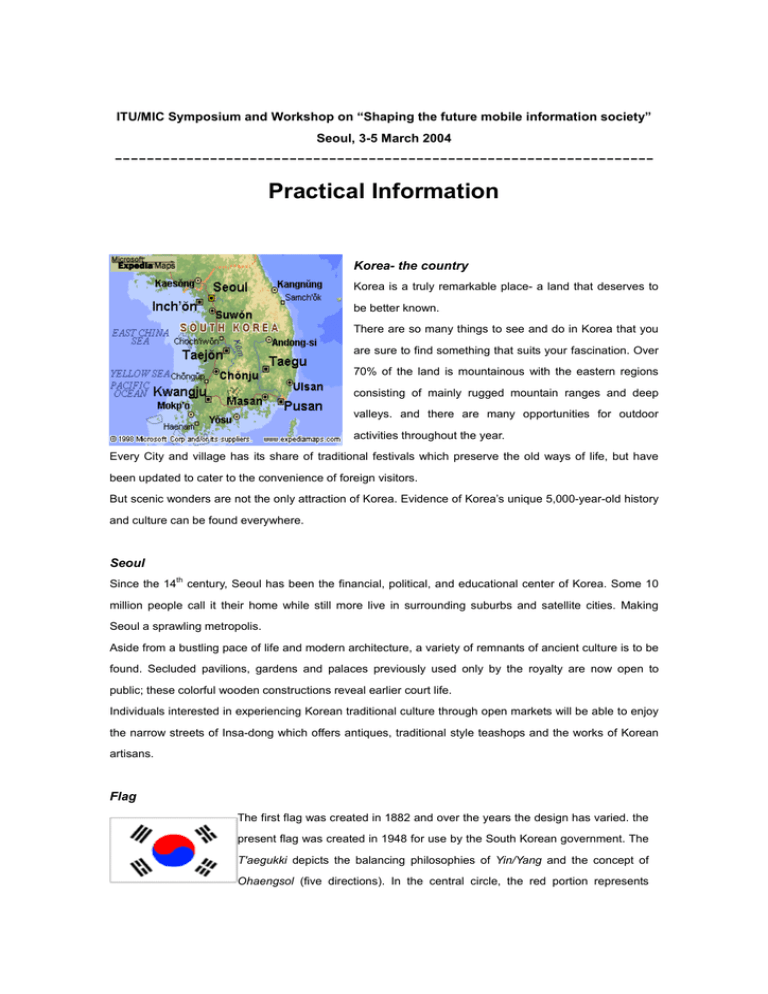
ITU/MIC Symposium and Workshop on “Shaping the future mobile information society” Seoul, 3-5 March 2004 -------------------------------------------------------------------- Practical Information Korea- the country Korea is a truly remarkable place- a land that deserves to be better known. There are so many things to see and do in Korea that you are sure to find something that suits your fascination. Over 70% of the land is mountainous with the eastern regions consisting of mainly rugged mountain ranges and deep valleys. and there are many opportunities for outdoor activities throughout the year. Every City and village has its share of traditional festivals which preserve the old ways of life, but have been updated to cater to the convenience of foreign visitors. But scenic wonders are not the only attraction of Korea. Evidence of Korea’s unique 5,000-year-old history and culture can be found everywhere. Seoul th Since the 14 century, Seoul has been the financial, political, and educational center of Korea. Some 10 million people call it their home while still more live in surrounding suburbs and satellite cities. Making Seoul a sprawling metropolis. Aside from a bustling pace of life and modern architecture, a variety of remnants of ancient culture is to be found. Secluded pavilions, gardens and palaces previously used only by the royalty are now open to public; these colorful wooden constructions reveal earlier court life. Individuals interested in experiencing Korean traditional culture through open markets will be able to enjoy the narrow streets of Insa-dong which offers antiques, traditional style teashops and the works of Korean artisans. Flag The first flag was created in 1882 and over the years the design has varied. the present flag was created in 1948 for use by the South Korean government. The T'aegukki depicts the balancing philosophies of Yin/Yang and the concept of Ohaengsol (five directions). In the central circle, the red portion represents positive Yang, while the blue portion represents negative Yin. It is an ancient symbol representing balance and harmony. The combination of bars in each corner also symbolizes opposites and balance. The set in the upper left corner symbolizes heaven, spring, east, and gentility. The lower right corner symbolizes the earth, summer, west, and justice. The upper right corner symbolizes the moon, winter, north, and wisdom. The lower left corner symbolizes the sun, autumn, south, and courtesy. Climates The Republic of Korea is located in the mid-latitudes of the Northern Hemisphere and the Temperate Zone with four distinct seasons. Geographically, it lies on the east coast of the Eurasian Continent adjacent to the West Pacific. During the winter, from December to January, it is cold and dry under the dominant influence of the Siberian air mass. Meanwhile, the summer, from June to August, is hot and humid with frequent heavy rainfalls associated with the East-Asian Monsoon, locally called "Changma". It is mild and serene during spring and fall with fairly periodic passages of the transient high and low pressure systems. The average temperature in March is in the range of 11.5ûC (52.7ûF) and the weather is generally warm and sunny. A sweater or jacket is advisable for evenings. For more details visit the Korea Meteorological Administration website at “http://www.kma.go.kr” Foreign Exchange & Credit cards Foreign currency and traveler’s checks can be converted into Korean won at foreign exchange banks and other authorized moneychangers. Major international credit cards, including VISA, America Express, Diner’s club, Master Card and JCB, are accepted at major hotels, department stores, and lager restaurants. Restaurants and shops generally display signs indicating what cards they accept. Banking and Business Hours Most private businesses open at 09:00 and close at 18:00 but some are open until late evening. Bank business hours are between 9:30 and 16:30 on weekdays. All banks are closed on weekends. Automated teller machines are widely available in 24-hour convenience stores, subway, hotel, bank. Tax and Tipping Value Added Tax(VAT) is levied on most goods at a standard rate of 10%. In major tourist sports10%VAT plus a 10% service charge is added to the bills for the services. Transportation Bus Information You may get information on limousine and buses and purchase the bus ticket at the Transportation Information Counter (near the exit No. 2, 4, 9, 13) on the arrival floor (1st floor) of passenger terminal. You may purchase bus tickets at the designated counters in the passenger terminal. Bus stop Destination First Last Interval Traveling Fare Bus Service Bus Bus (min) time(min.) (KRW) company Bus stop number City 3B, IIA ↔ Samseong Stn. Seoul Seoul Air Terminal 10B (COEX,InterContinental 05:30 22:30 (Samseong Stn) Hotel) 10~15 65 12,000 Korea (11USD) Air Terminal 02-5510077~8 City Taxi Information Category Fare(KRW) Regular Taxi 1,600 (Seoul) Remark Hours between 24:00 ~ 04:00, Receipt and free interpretation service provided (Required) Car phone service Deluxe Taxi 4,000 Receipt and free interpretation service provided (Required) No additional charge during midnight hours Brand taxi: All conditions are the same as the regular taxi. (Taxi running business only in Seoul) There is no additional charge when crossing the regional border between city or province since Incheon International Airport is protected area for applying additional charges

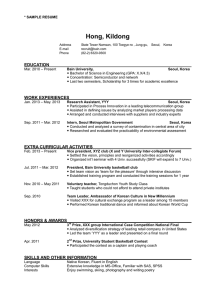
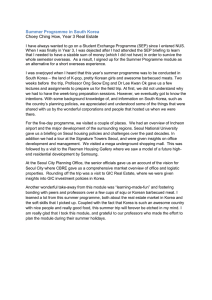
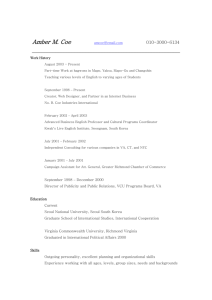
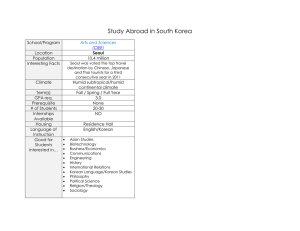


![H L E YEUN[“He-un”]](http://s2.studylib.net/store/data/013123453_1-bd60155f491dcb84f1398629fa88482e-300x300.png)